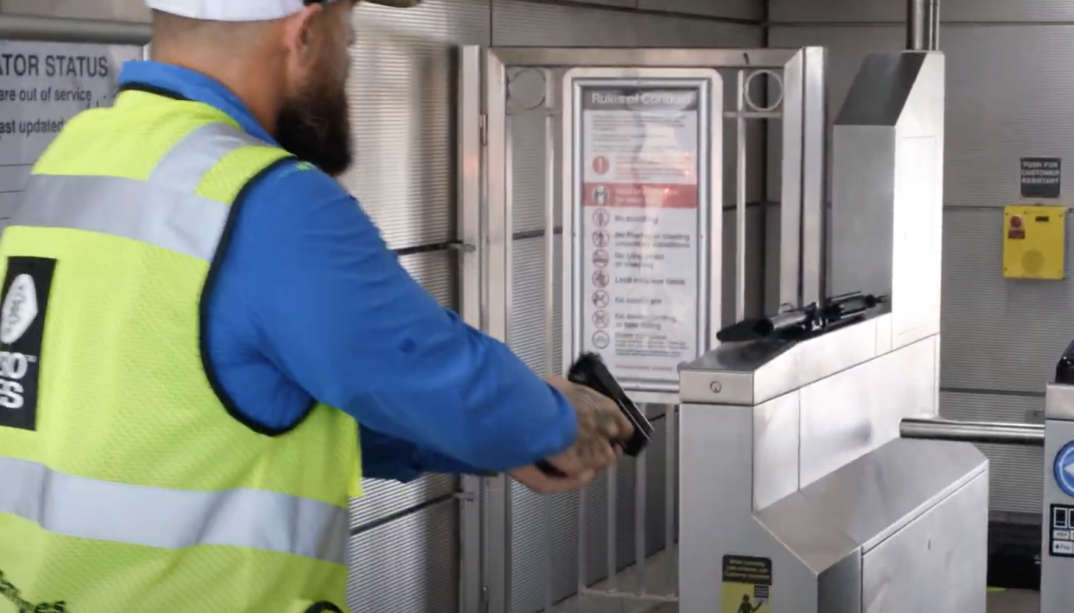The recent tragic shootings of four people on a CTA Blue Line train reinvigorated a debate over making public transportation safe for riders.
Just days before the shootings, the CTA announced new surveillance technology on top of its already extensive network of surveillance cameras. This new technology uses artificial intelligence to review images captured by surveillance cameras in search of people brandishing guns on trains and buses.
This is the latest bit of surveillance offered to watch Chicagoans, with the city justifying this “add-on” under the false promise of enhancing public safety.
But why should we believe that simply adding yet another new, invasive technology will make us safe, after previous assurances that surveillance cameras would do the job have proven wrong?
Chicago, including our public transportation system, is already one of the most-surveilled cities in the country. The current integrated camera system (estimated by some to include as many as 80,000 cameras) already has pernicious and unintended harms. These include undermining our expectation of privacy and relative anonymity in public by tracking where we go, who we talk to and who we associate with — all absent any evidence of criminal activity.
Technology is never perfect, and this untested surveillance also raises the real prospect of the false identification of people with weapons, a situation that can have tragic consequences.
Blanketing public spaces with cameras using unreliable AI to detect guns will increase the incidence of tragic confrontations, sparked by people holding cell phones, toy guns or other everyday objects that police have mistaken for firearms.
Secretive decision-making
Sadly, all of this was done in secret, with CTA unilaterally imposing this new and intrusive surveillance and issuing a press release after the technology was in place.
This is not the way this process should work. Rather than blindly believing sales pitches touting technology as the universal solution to our problems — a narrative driven by the companies making these products — Chicago needs to take a more transparent approach by involving the people who are most concerned with public safety on CTA: the people who use the transit system every day.
This process should reflect a new approach, including transparency around what surveillance technology already exists.
Because there was no debate around this new surveillance technology, we cannot possibly know how effective it is in practice. In its review of the tech, the Department of Homeland Security noted the “software had trouble detecting multiple people wielding weapons, simultaneously,” and lower-quality cameras made reviewing images difficult.
Philadelphia’s transit authority recently ended its contract with the same company being used by CTA after it learned it was not compatible with their existing system.
Perhaps most important, we need a discussion about the rates of misidentified or unidentified weapons generated by the system, because we know the software has already made mistakes. In Texas, a shadow cast by a student’s arm (this technology was first targeted for school surveillance) triggered a false positive and a lockdown at the school.
Without transparency and reporting of publicly available information, it’s hard for law enforcement to make community-informed decisions about what surveillance tools to adopt, it’s hard for policymakers to make policy, and most importantly, we have no say in decisions about surveillance in our communities.
We know there are policies that advance public safety, from addressing the number of illegal weapons flooding the city to efforts to enhance the Chicago Police Department’s historically-low closure rates of gun crimes. These measures will build trust between the police and the community, further enhancing public safety.
Whether or not to adopt surveillance technology should be a debate that involves the people being surveilled, and we should not rush to adopt harmful and untested technology. Resisting surveillance technology on our public transport is one possible exit ramp on the road to a surveillance state. Another would be the city sunsetting old, outdated and ineffective surveillance systems already in place.
We should not allow these tools to strip us of our civil rights and liberties under the false pretense of protecting public safety.
Stephen Ragan is the policy and advocacy strategist for privacy, technology and surveillance at the ACLU of Illinois.
The views and opinions expressed by contributors are their own and do not necessarily reflect those of the Chicago Sun-Times or any of its affiliates.
The Sun-Times welcomes letters to the editor and op-eds. See our guidelines.
Get Opinions content delivered to your inbox.





